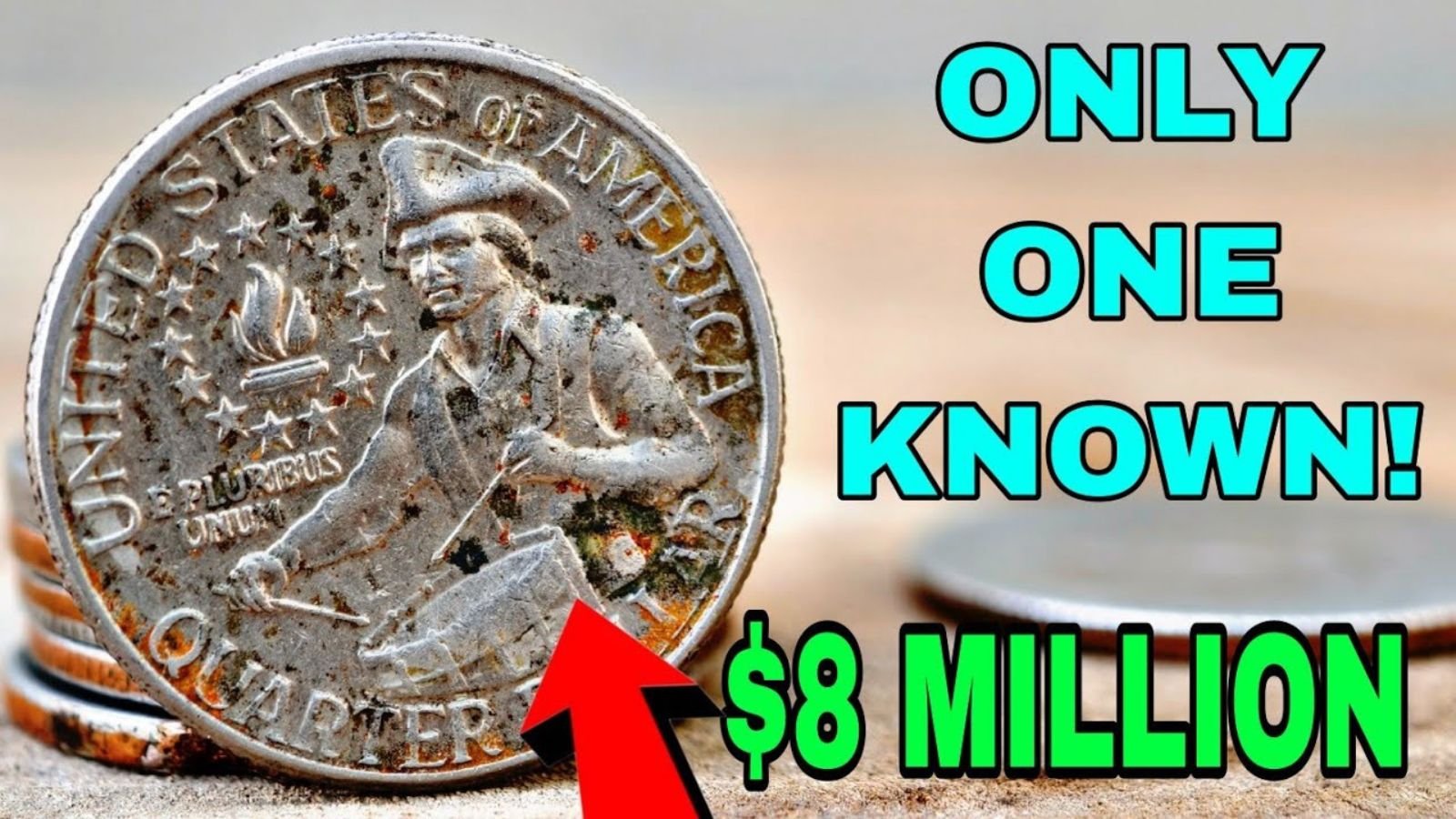The Bicentennial Quarter, released in 1976 to celebrate America’s 200th year of independence, is a familiar sight in many coin jars and collections. However, not all Bicentennial Quarters are created equal. Among the millions minted, one extraordinary coin has emerged as an almost mythical treasure: the most valuable Bicentennial Quarter, reportedly worth a staggering $8 million. This article explores what makes this specific coin so special, its background, and how it became the holy grail for collectors.
Most valuable Bicentennial Quarter: A Historic Commemorative Issue
The Bicentennial Quarter holds a unique place in U.S. coinage history. It replaced the standard Washington Quarter design for two years (1975 and 1976) with a commemorative reverse featuring a Colonial drummer boy and a torch encircled by 13 stars—symbolizing the original colonies. The obverse retained George Washington’s profile but carried the dual date “1776-1976” to mark the bicentennial.
The U.S. Mint produced these coins in Philadelphia, Denver, and San Francisco, with over 1.6 billion units issued. Most are common and valued at face or slightly above, but rare varieties and mint errors can be worth a fortune.
What Makes This Bicentennial Quarter Worth $8 Million?
1. Extremely Rare Mint Error
The $8 million Bicentennial Quarter reportedly features a unique mint error or anomaly that sets it apart. In rare cases, coins can be struck on the wrong planchet, with misaligned dies, or even double-struck. These minting errors are extremely rare and highly prized.
Numismatists believe this coin may have been struck on a silver or experimental planchet by mistake, or it may have an unintentional die variation that never entered mainstream production. A wrong metal composition, such as being struck on a 90% silver planchet rather than the intended 40% or clad composition, could drastically raise its value.
2. Unique Provenance and Authentication
This coin is believed to be the only one of its kind ever authenticated, making it a “unicorn” in the coin-collecting world. Verified by leading grading organizations such as PCGS (Professional Coin Grading Service) or NGC (Numismatic Guaranty Corporation), the coin’s provenance adds to its mystique and appeal. Provenance documentation, auction history, and a clean chain of custody can boost a coin’s market value exponentially.
3. Flawless or Near-Flawless Condition (MS-68 or Higher)
Condition is everything in the world of rare coins. This $8 million Bicentennial Quarter is believed to be in Mint State (MS) 68 or higher, meaning it shows virtually no wear and has pristine surface quality. Coins of this grade are exceedingly rare, especially for widely circulated designs like the Bicentennial Quarter.
The Design That Captivated a Nation
Bicentennial Quarter: Obverse Design
The obverse remains the classic profile of George Washington, sculpted by John Flanagan, but with the commemorative dual date “1776-1976” below the bust. This small detail alone sets the coin apart from standard Washington Quarters.
Bicentennial Quarter: Reverse Design
Designed by Jack L. Ahr, the reverse features a Colonial drummer boy to represent the American Revolution. A flame surrounded by 13 stars sits on the left, symbolizing unity among the colonies. This powerful imagery made the coin instantly iconic and continues to draw collectors today.
Rarity and Market Demand: The Million-Dollar Combination
Rarity and demand are the two pillars that determine a coin’s market value. While millions of Bicentennial Quarters exist, very few possess the combination of rarity, error, condition, and historical significance like the $8 million specimen. Here’s why collectors would pay a premium:
- It’s Unique: Only one is known to exist with this exact error or variety.
- It Has a Story: Coins with rich backstories attract investor attention.
- Certified and Graded: Official certification proves its legitimacy and boosts trust.
- Demand Surges: The coin’s notoriety fuels intense bidding wars among elite collectors.
Other Valuable Bicentennial Quarters
While none match the $8 million coin, other Bicentennial Quarters have fetched impressive amounts:
- Silver Bicentennial Proof Quarters: These were sold as part of special mint sets and can be worth $20 to $500 depending on condition.
- Double Die Quarters: Quarters showing doubling in the text or design elements can sell for $2,000 to $10,000.
- Off-Center Strikes or Broadstrikes: Depending on the degree and visual impact, values range from $500 to $5,000.
- S Mintmark Proof Coins (Deep Cameo): High-grade examples with strong contrast can bring $1,000+.
How to Know If You Have a Valuable Bicentennial Quarter
You don’t need to be a seasoned collector to recognize a potentially valuable Bicentennial Quarter. Here’s what to look for:
- Check the Mint Mark: Look for an “S” (San Francisco), “D” (Denver), or none (Philadelphia). “S” mint coins are often proof strikes.
- Examine the Edges: Silver quarters will not show the copper core on the edge.
- Inspect for Errors: Use a magnifying glass to check for doubling, off-center designs, or any abnormalities.
- Get it Graded: If it appears uncirculated and has anomalies, consider submitting it to PCGS or NGC for a professional grade.
Final Thoughts: Is the $8 Million Bicentennial Quarter Real?
While exact details about the $8 million Bicentennial Quarter remain part of numismatic legend, similar ultra-rare coins have shattered auction records before. The possibility of such a find fuels the dreams of hobbyists and professionals alike. Whether you’re an avid collector or someone with spare change in a drawer, keep an eye out. That quarter you overlook today might be the jackpot tomorrow.
Remember: Even if yours isn’t worth $8 million, many Bicentennial Quarters still hold significant collector value. Always evaluate your coins carefully, and when in doubt, consult a professional.
Some Important Link
| Telegram Group | Click Here |
| WhatsApp Group | Click Here |
| Home Page | Click Here |










